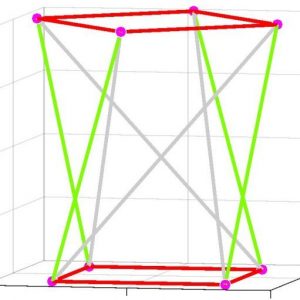On this page you’ll find recordings of auditory noise with different colors: pink, white, brown, blue, violet, etc.. The noise is normalized for loudness! A lot of the apps and online sources don’t have this. Another unique feature is that the noise can have a gradual and very subtle modulation of the color. The recording below contains a parameter sweep with a 10-minute-period. Give it a listen to hear if you can tell the modulation as it’s happening. The python code https://github.com/dobri/rainbow_noise_machine.git generates the noise in near real-time so you can play the noise indefinitely long on your computer with little streaming or memory requirements. You can also generate .wav files like the ones below with different parameters.
Multi-color noise. The β exponent is gradually modulated in the range [-2,2]
“Brown” noise β=2
Technically, Brownian motion. Powerful in the lower range.
β=1.5
Between pink and brown. Not as quiet as brown.
Pink noise β=1
The classic noise. Most powerful perceptually for a flat scaling law.
β=.5
Colored noise between white and pink
White noise β=0
Probably the original noise. A little harsh in the upper range.
β=-.5
This is starting to go the weird way of high-freq dominance
Blue noise β=-1
High-frequency dominance. Sounds quieter.
β=-1.5
Between blue and violet. You may need to raise the volume
Violet noise β=-2
A hiss, total dominance of the higher frequencies.
Background. Parenting made me aware that background noise machines are often recommended to help infants fall asleep and stay asleep for longer. It turned out that there is a whole niche for apps and streaming media offering different types of background noise. There are the classic pink and white noises, but apparently there’s also blue and violet noise. The problem is that many of these sources suck, and there isn’t one single place to get everything you need.
One of the common problems is that perceived loudness is not considered. When the scaling exponent β of the power spectrum density (PSD) changes color it also drastically alters the total energy of the signal and the perceived loudness. Normalizing by variance or maximum amplitude does not produce the desired effect because the human ear is not equally sensitive to all frequencies. Here, we tried to deal with this by using industry-standard loudness meter and normalization. The result is not perfect especially in the non-stationary range β>1. As the scaling approaches β=2 the sound appears much quieter.
